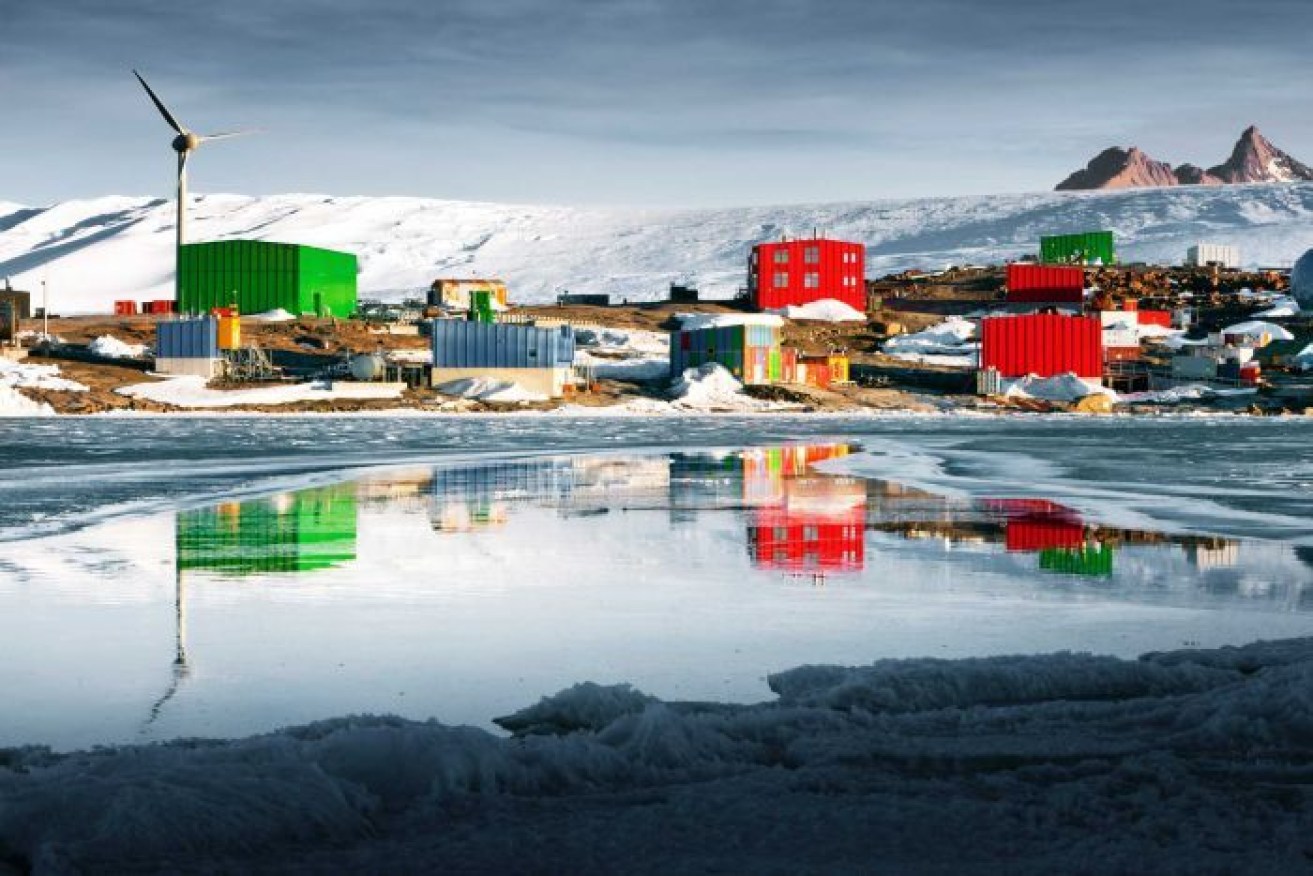Dark shadow over Australia’s future in Antarctica

Mawson Station in Antarctica: last week the Antarctic program received a $200 million funding boost. Photo: Supplied (AAD/Chris Wilson)
The Federal Government is being warned Australia is in danger of losing its position as an Antarctic leader, as well as its claim over the frozen continent, unless it maintains funding for its scientific research program.
Australia asserts sovereignty over 42 per cent of Antarctica, and has deep historic ties to the continent, but new players are emerging and challenging the traditional arrangements.
Australian Strategic Policy Institute senior analyst Anthony Bergin fears countries like China and Russia are playing a long game in Antarctica, saying both have been up-front in their desire to exploit the continent.
“If the Antarctic Treaty were to collapse, then obviously all bets would be off in terms of countries legally being able to pursue a military presence in Antarctica,” Dr Bergin said.
Australia is one of the 12 original signatories to the Treaty which ensures Antarctica remains a conservation zone: free from mining, exploration and crucially, military bases.
While the economic value of Antarctica cannot be measured, there could be massive mineral, oil and gas reserves beneath the surface, and a virtually untouched krill fishery off the coast.
Federal Labor MP and keen Antarctic observer, David Feeney, said the global rules governing Antarctica could be re-written in a few decades time and Australia needs to maintain its influence around the negotiating table to ensure the status quo remains.
“We have always been able to take for granted having a peaceful and stable southern flank,” Mr Feeney said.
“The problem we have at the moment is that non-traditional, external powers, particularly China and Russia, are now embarking on very significant programs in Antarctica.
Edge of globe: Exclusive #Antarctica aerial view, with Chinese icebreaker, research station, during China's 33rd Antarctic expedition pic.twitter.com/2wax3mdDA7
— China Xinhua News (@XHNews) December 6, 2016
“That puts Australia’s claim and Australia’s presence into the shade.”
While Australia has three scientific research bases, and a replacement ice-breaker on the way, China is searching for a site for its fifth research base and building a new class of ice-breaker vessels.
Mr Feeney said Australian scientists are also unable to reach the continent during difficult climate periods and once they are there, do not have the traverse capability to get into the interior of Australia’s territory.
According to Mr Feeney, years of under-funding have eroded Australia’s standing in Antarctica and “we need to take far more seriously our presence there and investment in our presence there”.
The currency of Antarctic influence
Federal Environment Minister Josh Frydenberg has begun to turn that around.
This year, he oversaw a $200 million funding boost to the Antarctic program and last week, became the first minister in four years to visit Australian scientists working on the frozen continent.
He said the Turnbull Government was making a “record financial commitment” in Antarctica and taking its responsibilities and leadership role “very seriously”.
“It’s very important for Australia to have a leadership role here, it’s a strategic asset, an economic asset and of course an important environmental asset, so our presence will continue long into the future,” he said.
Photo of the Day: Drifting Valleyhttps://t.co/mQVj4vzi5D #photography #pod
— National Geographic (@NatGeo) December 8, 2016
But that extra funding should be seen as the “absolute floor” according to Dr Bergin, who said when it comes to Antarctica, “money doesn’t talk, it screams”.
“It’s a cliche but it’s true — science is the currency of Antarctic influence, so if we lose our edge in Antarctic science, that’ll directly affect our leadership,” he said.
That sentiment is echoed by the Director of the Australian Antarctic Division, Nick Gales, who said the work scientists are doing in Antarctica is vital to understanding the past, and helping to predict the future, of the Earth’s climate.
“We’re one of the leaders in the science world. It’s important we continue to invest in a major way in supporting the science we’re doing. It’s not just science for curiosity’s sake, it’s science that’s essential for everyday Australians,” he said.
“We are well-funded but we need to continue to be well-resourced to continue to do that work.”
105.
A small group of emperor penguins gather near the sea ice edge. Ross Sea, Antarctica. : https://t.co/bTq5zSQj13 pic.twitter.com/q90kipg4SQ— Photo's Story (@Photosstory009) December 6, 2016
Dr Gales has also been buoyed by the fact that the Government has developed a 20 year strategic plan which, for the first time, sets out Australia’s strategic interests and long-term objectives in Antarctica.
That plan highlights the need to upgrade the ageing research stations, and explore year-round aviation access, and specifically mentions a role for the Australian Defence Force (ADF).
The ADF has started flying its Globemaster aircraft to Antarctica each Summer to support the scientific work but Dr Bergin believes it could go even further.
“I’d like to see Defence personnel regularly deploy to Antarctica as part of the scientific stations, there’s no reason why Naval personnel couldn’t be put on our new Antarctic resupply vessel,” he said.
Dr Bergin said Australia has no Navy ships that are capable of sailing into the icy territory and points out the New Zealand Navy patrols the eastern parts of Antarctica each year looking for illegal fishing activity.








